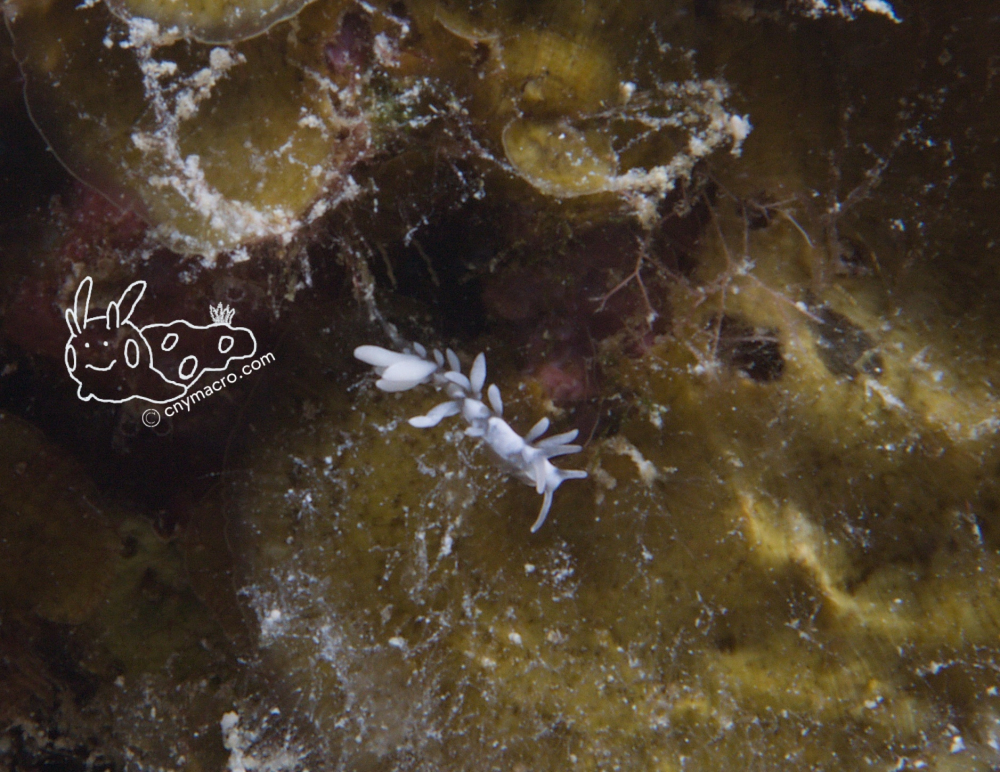
Scientific Name: Aeolidiidae sp. (juvenile)
Common Name: Juvenile Aeolid Nudibranch
Adult Size: 3 – 10 mm (juvenile stage)
Depth Range: 3 – 20 m; commonly observed on shallow sandy or rubble slopes, coral heads, and algal-covered substrates
Biotope / Habitat: Found in mixed reef zones and rubble areas rich in hydroids and anemones—typical prey of the Aeolidiidae family
Diet: Carnivorous; feeds primarily on sea anemones and hydroids. Even as juveniles, members of this family can sequester stinging cells (nematocysts) from their prey for defense
Reproduction: As a juvenile, not yet sexually mature; adults are simultaneous hermaphrodites that lay spiral ribbons of eggs on hard substrates near prey colonies
Fun Fact: Juvenile aeolids are miniature versions of their adult forms—delicate, translucent, and often glowing with hints of orange or white in their cerata. Their elegant movements and defensive adaptations already show the sophistication of their future adult stage.
Tiny, transparent, and brimming with potential, this Aeolidiidae juvenile embodies the beauty of early nudibranch life. Spotting one requires patience and a keen eye—proof that even the smallest creatures on the reef can captivate with grace and detail.
